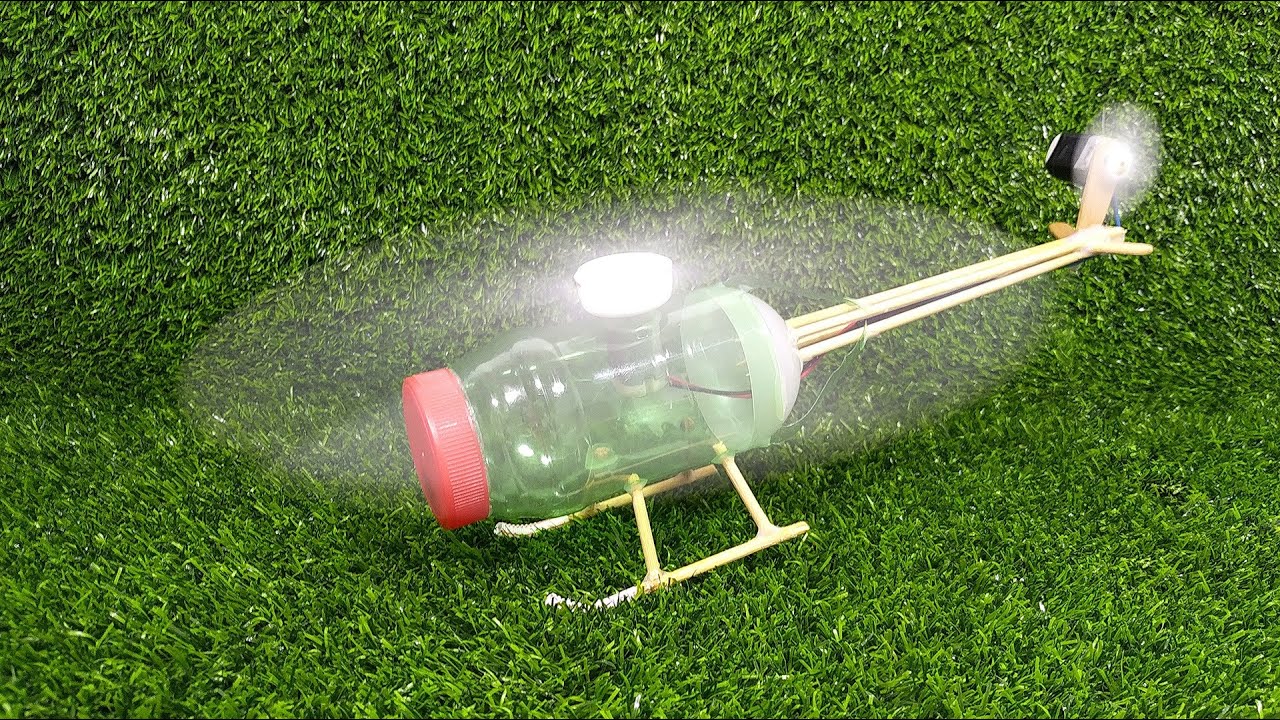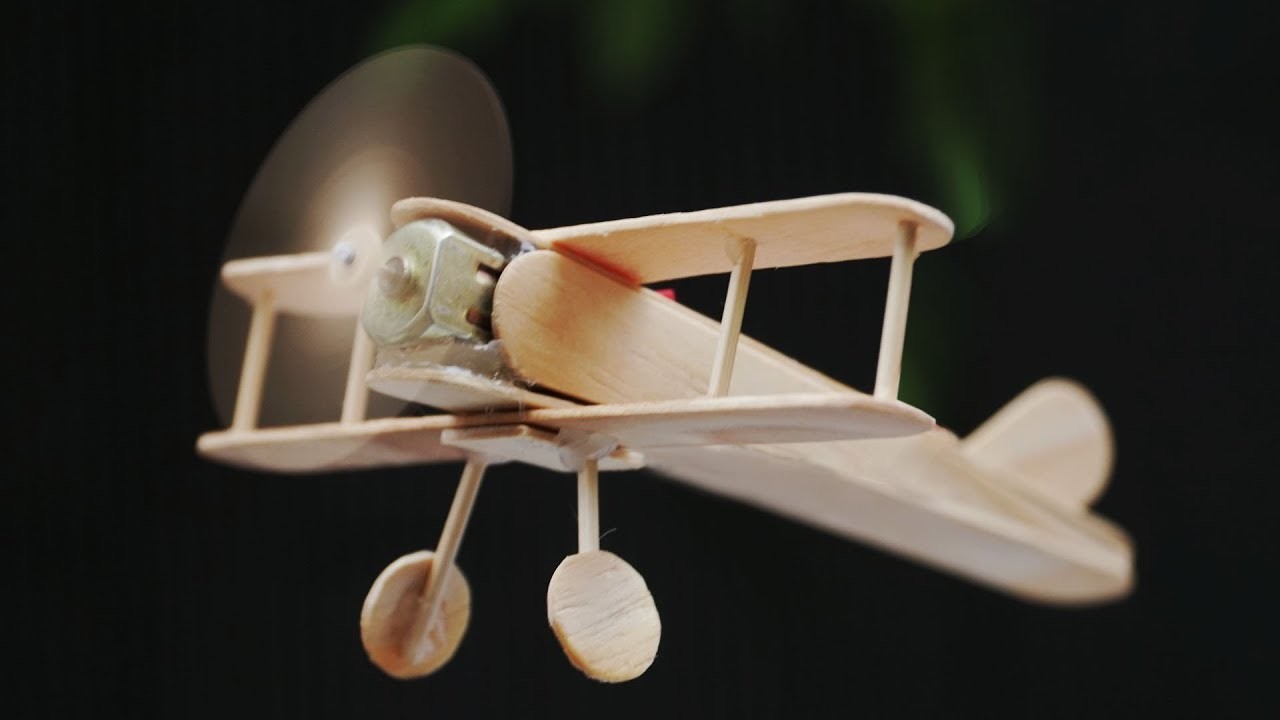Have you ever looked up at a helicopter flying by and thought, "I wonder if I could make one myself?" Well, you're in luck! Building a helicopter at home with a motor can be a fun and educational project. This guide will walk you through the materials needed and the step-by-step process to create your own mini helicopter. Whether you’re a hobbyist, a parent looking for a fun activity with your kids, or just someone who enjoys DIY projects, this is a rewarding task that blends creativity with basic engineering principles. So, let’s get started!
Materials Needed

Before diving into the construction process, it’s crucial to gather all the necessary materials. Here’s a handy list of what you’ll need:
- DC Motor: This will be the powerhouse of your helicopter. A small brushed or brushless motor works well.
- Propellers: Choose lightweight plastic propellers that are compatible with your motor size. You can often find these online or at hobby stores.
- Battery: A rechargeable lithium-polymer (LiPo) battery is ideal, but AA batteries can work too for a simpler setup.
- Frame: Use materials like balsa wood, cardboard, or plastic to create a lightweight frame for your helicopter.
- Wire: Thin insulated wire will help connect your motor to the battery and switch.
- Switch: A simple toggle switch can control the motor’s power.
- Glue: Hot glue or superglue will hold everything together securely.
- Tools: You’ll need a soldering iron (if using wires), scissors, and a small screwdriver.
With all these materials ready, you’re well on your way to crafting your very own helicopter! The next steps will be all about assembly, which we will cover in the following sections.
Step-by-Step Instructions

Creating a helicopter model at home can be an exciting and educational project! Here, we’ll break down the steps for you to easily follow along.
- Gather Your Materials:
- A toy motor (small, lightweight)
- Two wooden sticks or straws (for the rotor blades)
- Cardboard or plastic (to create the helicopter body)
- Battery (to power the motor)
- Wires (to connect the motor to the battery)
- Scissors and tape (for assembly)
- Optional: paint or markers (for decorating your helicopter)
- Build the Helicopter Body:
Cut your cardboard or plastic into a rectangle approximately 6 inches long and 3 inches wide. This will form the main body of your helicopter.
- Attach the Motor:
Secure the toy motor to the top center of the helicopter body using tape. Ensure that it’s fixed firmly so it does not move when it operates.
- Create Rotor Blades:
Take your wooden sticks or straws and cut them to around 8 inches in length. Attach these to the motor shaft, making sure they are positioned horizontally from the motor for maximum lift.
- Connect the Battery:
Use the wires to connect the motor terminals to the battery. Ensure that you observe the correct polarity: positive to positive, and negative to negative.
- Test and Adjust:
Turn on the battery to see the rotor blades spin. You may need to adjust the angle of the blades for optimal performance.
Tips for Success
Making a helicopter at home can be challenging, but these tips can help ensure your project goes smoothly!
- Choose the Right Motor: Picking a lightweight motor with ample torque is crucial. A motor that is too heavy may hinder your helicopter's flight.
- Use Balanced Rotor Blades: Make sure both rotor blades are of equal weight and length for balanced flight performance.
- Experiment with Blade Angles: Adjusting the tilt angle of your rotor blades can drastically improve lift and stability.
- Test in an Open Space: For safety and optimal testing, choose a spacious area to test your helicopter to avoid crashes and damage.
- Decorate with Care: While it’s fun to personalize your helicopter, avoid adding too much weight which can affect flight ability.
- Ask for Help: This project can be a great bonding time! Invite family or friends to join you in building and troubleshooting your helicopter.
5. Conclusion
Making a helicopter with a motor at home is not just an engaging project; it's also a fantastic opportunity to learn about basic engineering and aerodynamics. By following the steps and tips outlined in this guide, you can build a working model that demonstrates the principles of flight. It doesn't matter if you're a beginner or someone with more experience; this project is adaptable for all skill levels!
Throughout the process, you’ve honed essential skills, from design and planning to hands-on assembly and troubleshooting. The sense of accomplishment you gain after watching your homemade helicopter soar is certainly a reward in itself. Plus, this kind of project is a wonderful way to bond with family or friends – you can turn it into a fun weekend activity!
Remember, the key to improving your builds is to keep experimenting and iterating. If your first attempt doesn't fly as well as you'd hoped, don't get discouraged! Analyze what went wrong and make adjustments for next time. Also, keeping safety in mind while working with motors and tools is paramount.
So, gather your materials, channel your inner engineer, and start your helicopter-making adventure! You never know what you'll learn along the way.
6. Additional Resources
To further enhance your understanding of making helicopters at home, here’s a curated list of additional resources that can guide you through various aspects of this exciting venture:
- Books:
- The Art of Electronics – A must-read for understanding the electronics behind your projects.
- How Things Fly – This book dives deep into principles of flight, perfect for the curious mind.
- Online Tutorials:
- YouTube Helicopter Tutorials – A plethora of visual guides to follow.
- Instructables – A great site for step-by-step instructions on various DIY projects.
- Forums and Communities:
- Reddit DIY community – Share your progress and get advice from fellow enthusiasts.
- RC Groups – A forum for remote control enthusiasts, including helicopters.
Exploring these resources will open up new avenues for creativity and innovation in your helicopter-making journey. Happy building!
 admin
admin








